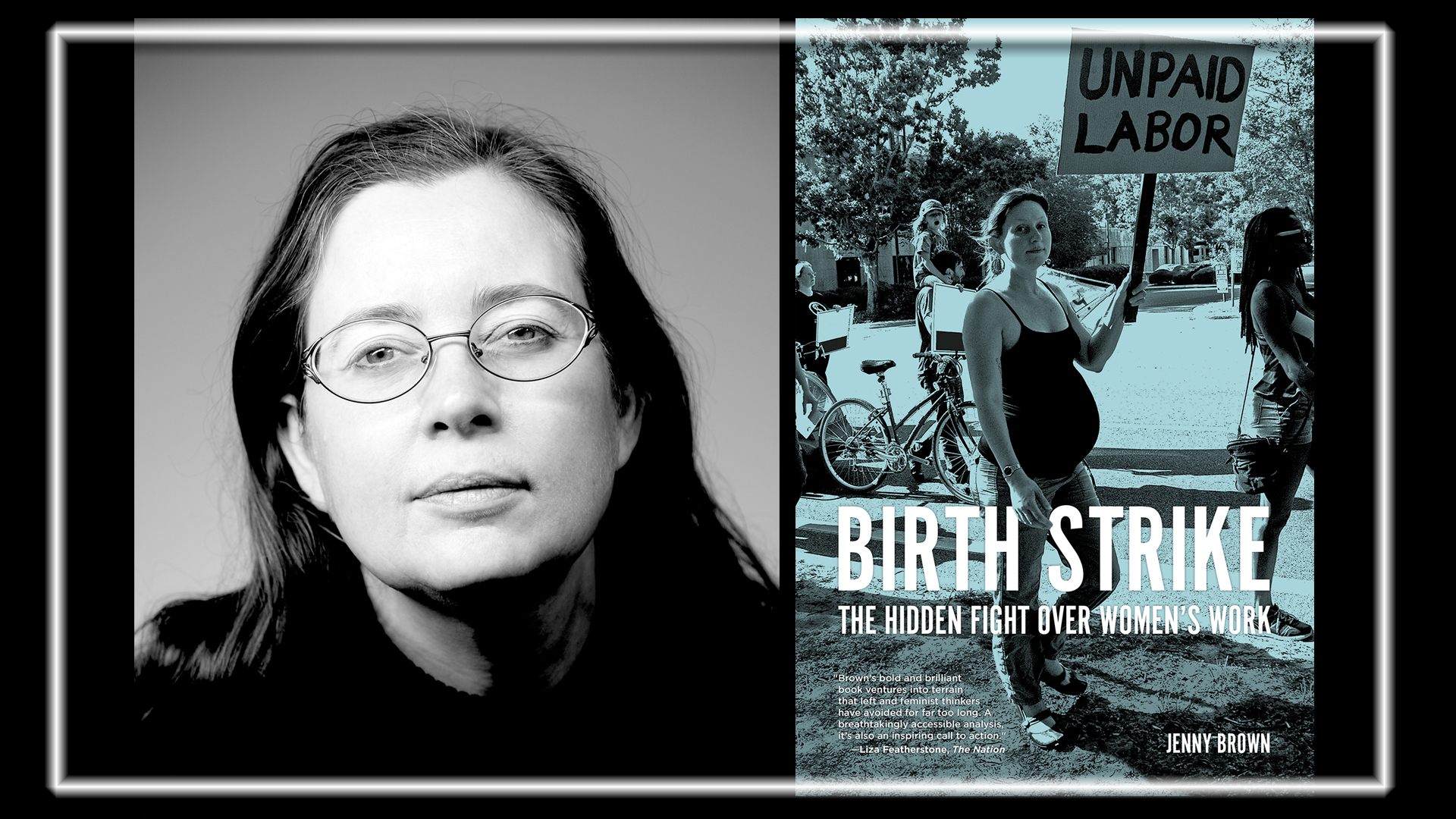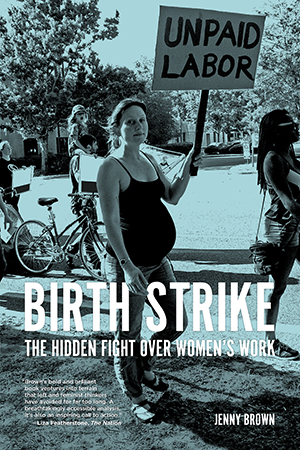By Eileen Boris
Labor: Studies in Working-Class History Volume 17, Issue 3
December 2020
Feminist historians have embraced the concept of reproductive labor, but too many of us have shied away from speaking about biological reproduction lest we fall into gender essentialism. We talk about social reproduction: the socialization and care of children and dependent people, as well as the quotidian activities of life necessary to replenish labor power. This term includes household and sex/affective production, both paid and unpaid. Journalist and activist Jenny Brown treads where others have not. Birth Strike: The Hid- den Fight over Women’s Work offers a novel lens into the “work and family” dilemma facing wage-earning women. Women cope with the difficulty of earning income and tending to households by having fewer children. This solution has led those in power to further “deprive us of reproductive control” (11). Brown marshals historical examples for a presentist agenda: to empower women to control the bearing and rearing of children, end their exploitation and underpayment, and improve the conditions of reproductive labor—as part of the class struggle. She grounds analysis in the testimonies of women involved with National Women’s Liberation, an organization to which she belongs.
Scholars and other feminists, Brown argues, have gotten the underbelly of anti- abortion politics wrong. It isn’t New Right “family values” or misogyny that propels ever- increasing restrictions on the ability of women to obtain abortions, birth control, and additional reproductive services. Rather than a battle over “outdated religious doctrine, it is a struggle over our labor,” she contends (11). Women’s reproductive labor is valuable, especially when its productivity lags as measured by a falling birth rate. Assuming that economic growth depends on a population of producers and consumers, then employers have an interest in increasing the labor supply as cheaply as possible. Some nations seek to encourage the making of people through compensated leaves and publicly provided care. In contrast, the United States retains a privatized system of reproduction. According to Brown, our employers call the shots. She rhetorically asks, “Why would employers pay for parental leave if they can push us into maternity for free? Why would corporations pay taxes for a national childcare system if families can be induced to take the burden upon themselves?” (11). Corporations and their political minions, in Brown’s view, hide their intent, denying that in order to increase the birth rate they work to “make abortions harder to get, make birth control expensive, keep sex education out of the schools, and in case you get any ideas, . . . prosecute women suspected of aborting their pregnancies themselves” (28).
Brown is at her best in deconstructing rhetoric. “What ‘pro-family’ really means,” she explains, “is families instead of government: Cut government and put the work on families. And by ‘families’ they mean women, and women’s unpaid labor” (34). Claim- ing “lower birth rates will destroy Social Security” (85) assumes that women can’t gain pensions through their earnings and replaces “a problem of distribution” (88) with fear that the number of workers available is inadequate. If the “employing class” manages to end responsibility for pensions, turning social responsibility into a private burden, then all of us, she claims, “would be back to playing the birth lottery,” which means “push- ing women back into the family as our economic unit of survival and extracting more unpaid work from us” (94). Behind the immigration debate lies the need for cheap work- ers and the displacement of the cost of reproducing future workers onto countries of ori- gin. But here Brown recognizes that importing workers is an imperfect solution. They don’t always lower wages because they concentrate in jobs that the US-born usually reject. More important, perhaps, Latina/os especially pose a double political problem: they tend to be class conscious, and citizens among them tend to vote Democratic. Meanwhile, the Republican base increasingly responds to xenophobia and racism.
In perhaps the strongest historical chapter, Brown documents the ways that the nation has used and used up the reproductive labor of Black women under slavery, after emancipation with Jim Crow, and despite freedom movements. From this history she understands “the goal is the exploitation of people’s work, not their elimination” (109). Drawing on Black feminist writings, she traces attempts to control the Black population by encouraging increase under enslavement and engaging in sterilization when mechani- zation lessened the need for human cotton pickers. Elasticity in the demand for labor cor- relates with access to abortion, contraception, and other services. Brown underscores the insight of the New York Wages for Housework Committee in the 1970s that protest was dangerous: “When the workers we produce are not disciplined enough, or when we claim some money for the cost of raising them—that is, when we are not disciplined enough, they sterilize us” (115). She wears the mantle of SisterSong and the women-of-color repro- ductive justice movement by recognizing the need to have children under healthful con- ditions as a corollary to the right not to have children.
For capitalists, however, producing more people takes too long to lower wages. A lower birth rate also interferes with the need for soldiers. Since population replacement takes years, what Brown actually exposes is the contradictions of a current high birth rate compared to Europe and Japan and the desire of employers to lower costs. Brown ends with an action plan: expose the hidden reasons for restricted reproduction; demand uni- versal programs to benefit those who do the work of reproduction, such as health care for all and free quality child care; deploy the strike weapon more directly for desired ends (e.g., availability of abortion pills); and maintain one’s organizations rather than accept foundation funding.
Brown has an important insight: capital really wants to lower the cost of “bear- ing and rearing children” by “extracting” women’s reproductive labor (132). Birth is a form of women’s work, and like other forms of labor, workers struggle for control. She has written a call for action—a polemic if you reject her assumptions, reductionist if you think history is more complicated than a ruling class hiding their greed behind religios- ity or scientism.
Jenny Brown is a National Women’s Liberation organizer and former editor of Labor Notes. She was a leader in the grassroots campaign to have “morning-after pill” contraception available over-the-counter in the U.S. and was a plaintiff in the winning lawsuit. In addition to Labor Notes, her work has appeared in Jacobin, Huffington Post, and Alternet, and she is coauthor of the Redstockings book Women’s Liberation and National Health Care: Confronting the Myth of America. She is the author of Without Apology: The Abortion Struggle Now.







